
The Royal Navy (RN) is the United Kingdom's naval warfare force and a component of His Majesty's Naval Service. Although warships were used by English and Scottish kings from the early medieval period, the first major maritime engagements were fought in the Hundred Years' War against France. The modern Royal Navy traces its origins to the early 16th century; the oldest of the UK's armed services, it is consequently known as the Senior Service.

The Combined Fleet was the main sea-going component of the Imperial Japanese Navy. Until 1933, the Combined Fleet was not a permanent organization, but a temporary force formed for the duration of a conflict or major naval maneuvers from various units normally under separate commands in peacetime.

Baron Kantarō Suzuki was a Japanese admiral and politician. He was an admiral in the Imperial Japanese Navy, member and final leader of the Imperial Rule Assistance Association and Prime Minister of Japan from 7 April to 17 August 1945.

Soemu Toyoda was an admiral in the Imperial Japanese Navy in World War II.

The United States Third Fleet is one of the numbered fleets in the United States Navy. Third Fleet's area of responsibility includes approximately fifty million square miles of the eastern and northern Pacific Ocean areas including the Bering Sea, Alaska, the Aleutian Islands, and a sector of the Arctic. Major oil and trade sea lines of communication within this area are critically important to the economic health of the United States and friendly nations throughout the Pacific Rim region.

The United States Second Fleet is a numbered fleet in the United States Navy responsible for operations in the East Coast and North Atlantic Ocean. Established after World War II, Second Fleet was deactivated in 2011, when the United States government believed that Russia's military threat had diminished, and reestablished in 2018 amid renewed tensions between NATO and Russia.
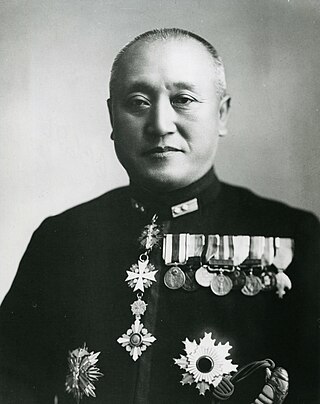
Nobutake Kondō was an admiral in the Imperial Japanese Navy during World War II. As commander of IJN 2nd Fleet, the Navy's principal detached force for independent operations, Kondō was regarded as second in importance only to Admiral Isoroku Yamamoto.

The Imperial Japanese Navy General Staff was the highest organ within the Imperial Japanese Navy. In charge of planning and operations, it was headed by an Admiral headquartered in Tokyo.
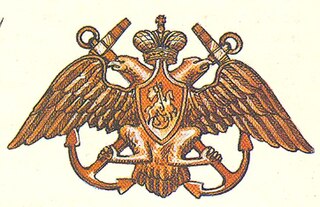
The Imperial Russian Navy operated as the navy of the Russian Tsardom and later the Russian Empire from 1696 to 1917. Formally established in 1696, it lasted until dissolved in the wake of the February Revolution of 1917. It developed from a smaller force that had existed prior to Tsar Peter the Great's founding of the modern Russian navy during the Second Azov campaign in 1696. It expanded in the second half of the 18th century and reached its peak strength by the early part of the 19th century, behind only the British and French fleets in terms of size.
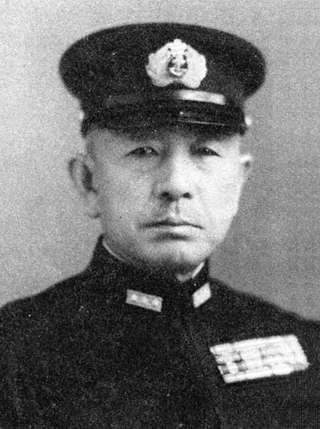
Mineichi Koga was a Japanese Marshal Admiral and commander-in-chief of the Imperial Japanese Navy's Combined Fleet.
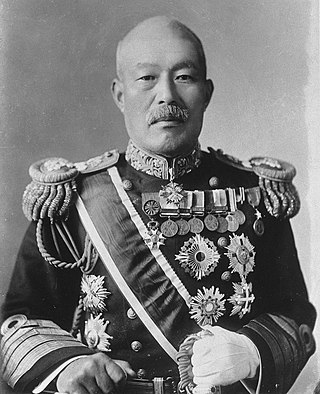
Marshal-Admiral Baron Shimamura Hayao was a Japanese admiral during the First Sino-Japanese and Russo-Japanese Wars as well as one of the first prominent staff officers and naval strategists of the early Imperial Japanese Navy.

Michitarō Tozuka was a vice admiral in the Imperial Japanese Navy in World War II.
The 5th Fleet was a fleet of the Imperial Japanese Navy, active during the early portions of the Second Sino-Japanese War, and again in World War II, primarily in the Aleutian campaign, during which it was augmented and designated the Northern Area Force.
The Southwest Area Fleet was a fleet of the Imperial Japanese Navy established during World War II.
The 2nd Fleet was a fleet of the Imperial Japanese Navy (IJN) created as a mobile strike force in response to hostilities with Russia, and saw action in every IJN military operation until the end of World War II.

The Battle of Attu, which took place on 11–30 May 1943, was a battle fought between forces of the United States, aided by Canadian reconnaissance and fighter-bomber support, and Japan on Attu Island off the coast of the Territory of Alaska as part of the Aleutian Islands campaign during the American Theater and the Pacific Theater. Attu is the only land battle in which Japanese and American forces fought in snowy conditions, in contrast with the tropical climate in the rest of the Pacific. The more than two-week battle ended when most of the Japanese defenders were killed in brutal hand-to-hand combat after a final banzai charge broke through American lines.
The First Fleet was the first transportation fleet of convicts from England to the Australian penal colony of Botany Bay.
The 1st Fleet was the main battleship fleet of the Imperial Japanese Navy.

Chōgei, was the second and final vessel of the Jingei-class submarine tenders operated by the Imperial Japanese Navy, from the 1920s through World War II. Along with her sister ship Jingei, she was the first purpose-built submarine tender in the Imperial Japanese Navy.
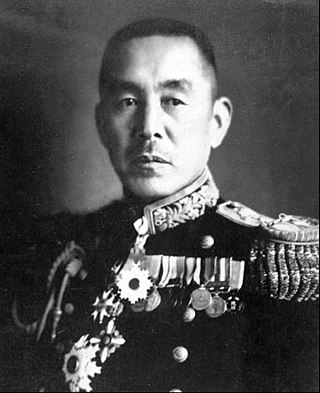
Teikichi Hori was an admiral in the Imperial Japanese Navy during the early twentieth century. During the interwar period, Hori was a prominent member of the Treaty Faction of the Navy, and opposed war against the United States and the United Kingdom. Hori was a close friend and mentor of Admiral Isoroku Yamamoto.
This page is based on this
Wikipedia article Text is available under the
CC BY-SA 4.0 license; additional terms may apply.
Images, videos and audio are available under their respective licenses.













